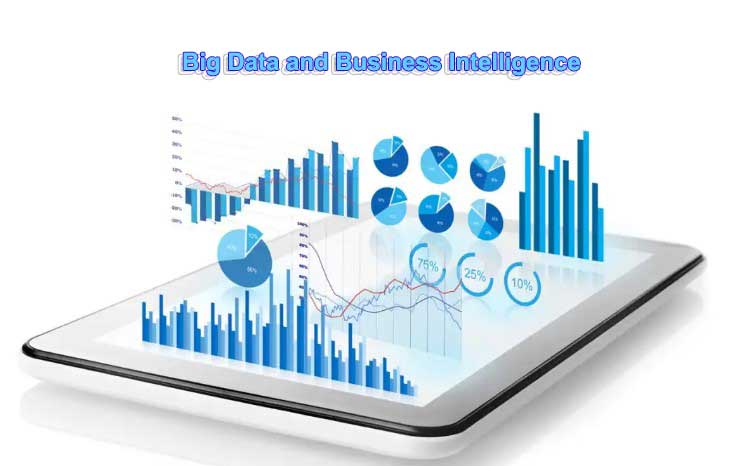Big Data and Business Intelligence: Transforming Data into Strategic Insights
In today’s data-driven business landscape, the convergence of Big Data and Business Intelligence (BI) has revolutionized how organizations harness and leverage data to gain actionable insights and drive strategic decision-making. Here’s how the integration of Big Data and BI is transforming the way businesses operate:

1. Big Data: Understanding the Landscape
Definition: Big Data refers to vast volumes of structured and unstructured data that cannot be processed effectively using traditional data processing techniques.
Characteristics:
- Volume: Big Data encompasses large volumes of data generated from various sources, including social media, sensors, and transactional systems.
- Velocity: Data is generated at high speeds and must be processed in real-time or near real-time to derive actionable insights.
- Variety: Big Data comes in diverse formats, including text, images, videos, and sensor data, requiring advanced analytical tools and techniques for processing.
- Veracity: Big Data is often characterized by uncertainty and variability in data quality, requiring robust data cleansing and validation processes.
2. Business Intelligence: Driving Informed Decision-Making
Definition: Business Intelligence (BI) refers to the processes, technologies, and tools used to analyze and interpret data, enabling organizations to make data-driven decisions.
Components:
- Data Integration: BI involves integrating data from disparate sources into a centralized repository for analysis, enabling a single source of truth.
- Data Analysis: BI tools and techniques analyze data to uncover insights, trends, and patterns that drive strategic decision-making.
- Data Visualization: BI platforms visualize data through charts, graphs, and dashboards, making complex information more accessible and understandable to users.
- Reporting: BI generates reports and summaries of key metrics and performance indicators, enabling stakeholders to track progress and measure success.
3. Integration of Big Data and Business Intelligence
Enhanced Analytics: Big Data technologies, such as Hadoop and Spark, enable organizations to process and analyze large volumes of data efficiently, providing BI systems with richer and more granular data for analysis.
Real-time Insights: The velocity of Big Data processing allows BI systems to deliver insights in real-time, enabling organizations to respond promptly to changing market conditions and customer demands.
Advanced Analytics: Big Data platforms support advanced analytics techniques, such as predictive analytics and machine learning, enhancing the predictive capabilities of BI systems and enabling organizations to forecast future trends and outcomes accurately.
Data-driven Decision Making: By integrating Big Data and BI, organizations can make informed decisions based on comprehensive and timely insights derived from vast volumes of data, driving innovation, efficiency, and competitive advantage.
4. Challenges and Considerations
Data Governance: Managing Big Data requires robust data governance policies and procedures to ensure data quality, security, and compliance with regulatory requirements.
Scalability: Big Data infrastructure must be scalable to accommodate the growing volume, velocity, and variety of data generated by organizations.
Skills Gap: Organizations must invest in training and hiring data scientists, analysts, and BI professionals with the skills and expertise to leverage Big Data technologies effectively.
Integration Complexity: Integrating Big Data and BI systems can be complex, requiring careful planning, architecture design, and implementation to ensure seamless interoperability.
Conclusion
The integration of Big Data and Business Intelligence represents a paradigm shift in how organizations leverage data to gain insights and drive strategic decision-making. By harnessing the power of Big Data technologies and BI platforms, organizations can unlock the full potential of their data assets, gain a competitive edge, and thrive in today’s data-driven economy.